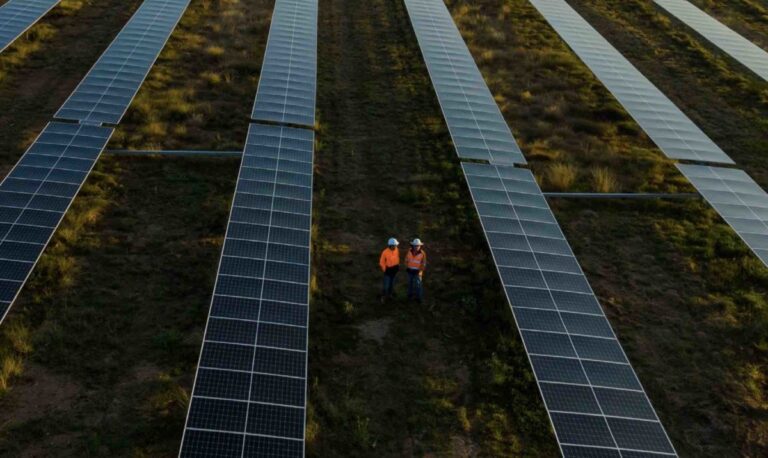
The global transition to renewable energy received significant attention this past week, with global leaders debating how to rapidly lower emissions.
There is no shadow of a doubt that we urgently need to switch to renewable energy to secure our future – but this is only half the story.
We need a radical change in how we design, manufacture and use materials. These are plastics, metals, fibers, chemicals, food and construction materials that are produced, bought and sold every day to serve a global population of just over 8 billion.
And we need to embrace circular engineering. A new concept to some, but as Australia’s first Chief Circular Engineer for Circular Australia, this engineering discipline will drive the jobs and industries of our future here in Australia and around the world.
Our one-way ‘take-make-waste’ economy has led to widespread resource depletion of the earth’s limited resources and our ever-increasing consumption driven by a relentless focus on economic growth is only accelerating this.
Our oceans, forests, savannahs and many mineral belts have been robbed to the point where we are now transgressing the boundaries of the planet.
When most of these products reach their end of life, some are recycled, but most end up in landfills and stockpiles, emitting more greenhouse gases, leaching toxic chemicals and polluting the our environment. And the production and use of products and food creates a whopping 45 percent of global greenhouse gas emissions.
The good news is that nothing really gets lost, thanks to the first law of thermodynamics. It states that energy and matter cannot be created or destroyed – only transformed – conserving matter and energy in the process.
On the one hand this means that the waste we create accumulates and most of the energy we burn ends up as greenhouse gas in the atmosphere – but it is also a force we can use for good.
By using this first law and by tapping into the great leaps in chemical engineering and materials science, we can create circular economies, where goods and materials are repurposed.
In the past, we had very little means of doing this, but now we have reached a point of chemical processing where even plastic waste can be turned into fuel, and greenhouse gases can be captured and made’ g useful materials.
Many are interested in the circular economy because they see it as a solution. Designing waste and circular products solves the complex crises facing the world above and beyond decarbonization – including biodiversity loss and resource scarcity.
It cannot rely on scientific progress alone, as the name suggests, our economic and cognitive structures must also be changed.
Importantly, a circular economy is not just about recycling – it is a larger, whole-of-society system. In the circular economy, business models operate by renting services, rather than selling products, and are driven by economic incentives shared by everyone involved in a product’s life cycle.
Extending product life has become an intentional business target in the circular economy rather than a utility.
Take solar panels for example. Australia is now a world leader with over three million installed in nearly 30 percent of homes.
By a rough estimate, that translates to 54 million panels, which if laid flat, would be equivalent to 214 Mount Everests. Lined end-to-end, it is equal to two and a half times the length of the Earth’s equator. What happens to these panels when they inevitably reach their end of life or are no longer fit for purpose?
A circular business model will look at the service provided by the panels rather than the panels as an individual product. The model defines a business that can own the solar panel throughout its life, offering the consumer a lease, maintenance and repair arrangement instead of a sales contract.
For that business, the income from the sale of the product will be transferred to the rental income. This provides an incentive for that business to seek to increase the efficiency of the solar panel product and essentially extend its life, by reengineering the panel through a better design.
Those large numbers of end-of-life panels do not need to be landfilled, but rather refurbished, recycled or destroyed to obtain the large amount of content – silicon, silver, glass and aluminum.
By circulating products and materials at their highest value, and renewing the environment, we will not only reduce waste but emissions, and be closer to meeting the targets outlined in the Paris Agreement.
Our collective responsibility is to make a change in the way we make and use things; incremental change is not enough.
Not changing our economic systems would be irresponsible and ignore the excellence of our modern economic thinking and vast technological advances.
We have so many materials at our disposal that we no longer need to rely on the old models of stealing, making and throwing away.
Professor Ali Abbas is the Chief Circular Engineer for Circular Australia and Acting Head of the School of Chemical and Biomolecular Engineering, University of Sydney.
